Papers by Maria Cristina Mancini

Libyan Studies, 2018
The four cemeteries of Cyrene were a living archaeological landscape whose life continued far bey... more The four cemeteries of Cyrene were a living archaeological landscape whose life continued far beyond antiquity. The habit of using monumental tombs was a long-lasting one in Cyrene, starting in the Archaic period and continuing until Roman times. The concept of ‘reuse’ is in itself a problematic one since, from a semantic point of view, it implies the presence of a clear-cut division between an original ‘phase of use’ and of a later ‘phase of reuse’. This approach could have sense when a clear hiatus is present, for example when speaking of modern reuse of ancient Greek tombs. However, the main problem is the use of the term ‘reuse’ when describing two ancient phases, such as a Hellenistic phase and a Roman phase of the same tomb, implying a clear hiatus between them even if one often lacks the elements for identifying the existence of such a hiatus. In particular, the Southern and Northern Necropolises have been analysed here to investigate this subject, basing the hypotheses on da...
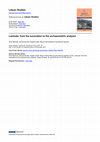
Libyan Studies, 2014
In the last ten years the Archaeological Mission of Chieti University in Cyrenaica has investigat... more In the last ten years the Archaeological Mission of Chieti University in Cyrenaica has investigated, through intensive field surveys and excavations, several contexts of the Cyrenaican chora. Among the many recorded settlements, Lamluda is the most interesting because of its urban organisation, productivity and location at the intersection of the main road network. Our aim is to present the preliminary data from the mapping, survey and excavation of the site, including the results of the archaeometric analysis and the epigraphic study. Among the copious ceramic finds the Roman coarse wares and amphorae are particularly numerous, dating mainly to the Imperial, Late Roman and Byzantine periods. The pottery illustrates not only the longevity of the settlement, which lasted until the eighth or ninth century AD, but also helps to trace the evolution of agricultural wealth and trade. Through archaeometrical and archaeological research it is possible to identify the main local products and...
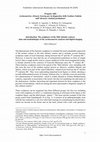
Frankfurter elektronische Rundschau zur Altertumskunde, 2020
The phenomenon of the funerary sculptures is certainly the most remarkable expression of the arch... more The phenomenon of the funerary sculptures is certainly the most remarkable expression of the archaic culture in the mid Adriatic context and it includes several funerary sculptures made of local limestone, dating between the 6 th and the 5 th centuries BC. 2. However, it must be clear that the use of monumental tombstones in form of simple baetyli, that is rough menhir used as semata (markers) of the most monumental tombs, is already attested in the cemetery of Scurcola Marsicana since the 7 th century BC 3. These funerary sculptures seem to be typical of the 'Mid-Adriatic' area, intending with this term the area of the modern regions known as Abruzzo, southern Marche and Molise, which were part of the 'paleo-Sabellian' cultural koine between the 6 th and the 5 th centuries BC. They were representing important local figures or chiefs, attesting a socially differentiated society of Archaic Abruzzo (Fig. 1); and they were not used only for a phenomenon of 'heroization', which is widely attested in Archaic Mediterranean contexts, especially in association with tumuli, but also for remarking role and status of the dead person. Another interesting and important element for these sculptures is the presence of inscriptions, which are among the most representative linguistic samples of this cultural context. 4 These sculptures can be organised into three different groups: the first two including stelai with sculptures in relief, i.e. tombstones bearing in relief part of the figure or the complete figure, and the third proper 'statues'. 5 The most ancient example of the first group comes from Guardiagrele (A in Fig. 1): it consists of an anthropomorphic stele with the face realized in a very low relief and wearing two orientalizing kardiophylakes, which are incised on the breast and on the back, joined with a belt with geometric
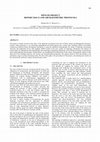
International Journal of Heritage in the Digital Era, 2012
The project is mainly focused on the study of the landscape assessment in the area of Moni, Pyrgo... more The project is mainly focused on the study of the landscape assessment in the area of Moni, Pyrgos and Monagroulli (Limassol-Cyprus), which represents a very interesting topographical and archaeological area. A large team, including scholars and students coming from different Italian and Spanish institutions, is using the traditional methodologies for studies of landscape archaeology (intensive and judgmental survey, GIS mapping, DGPS location of the sites, studies on typologies, distribution and statistics of pottery finds), in combination with methodologies and technologies integrating information, such as Remote Sensing on aerial photos and on high definition panchromatic satellite photos, geo-morphological reconstruction of the context, archaeometric analysis of the finds and of the building materials, non invasive geo-archaeological prospecting. The project started in 2010 and already at the preliminary stages is giving interesting results. The aim of this paper is the presenta...
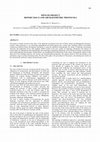
The project is mainly focused on the study of the landscape assessment in the area of Moni, Pyrgo... more The project is mainly focused on the study of the landscape assessment in the area of Moni, Pyrgos and Monagroulli, which represents a very interesting topographical and archaeological area. The large team, including scholars and students coming from different Italian and Spanish institutions, is using the traditional methodologies for studies of landscape archaeology (intensive and judgmental survey, GIS mapping, DGPS location of the sites, studies on typologies, distribution and statistics of pottery finds), in combination with methodologies and technologies integrating the information, such as Remote Sensing on aerial photos and on high definition panchromatic satellite photos, geo-morphological reconstruction of the context, archaeometric analysis of the finds and of the building materials, non invasive geo-archaeological prospecting. The project started in 2010 and already at the preliminary stages is giving interesting results. The aim of this paper is the presentation of the project, concentrating here mainly on the archaeometric protocols, analysis and preliminary results.

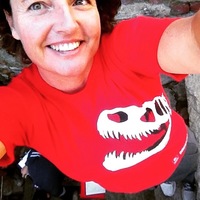







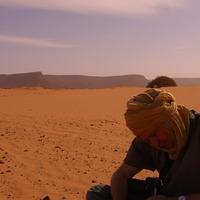

Uploads
Papers by Maria Cristina Mancini